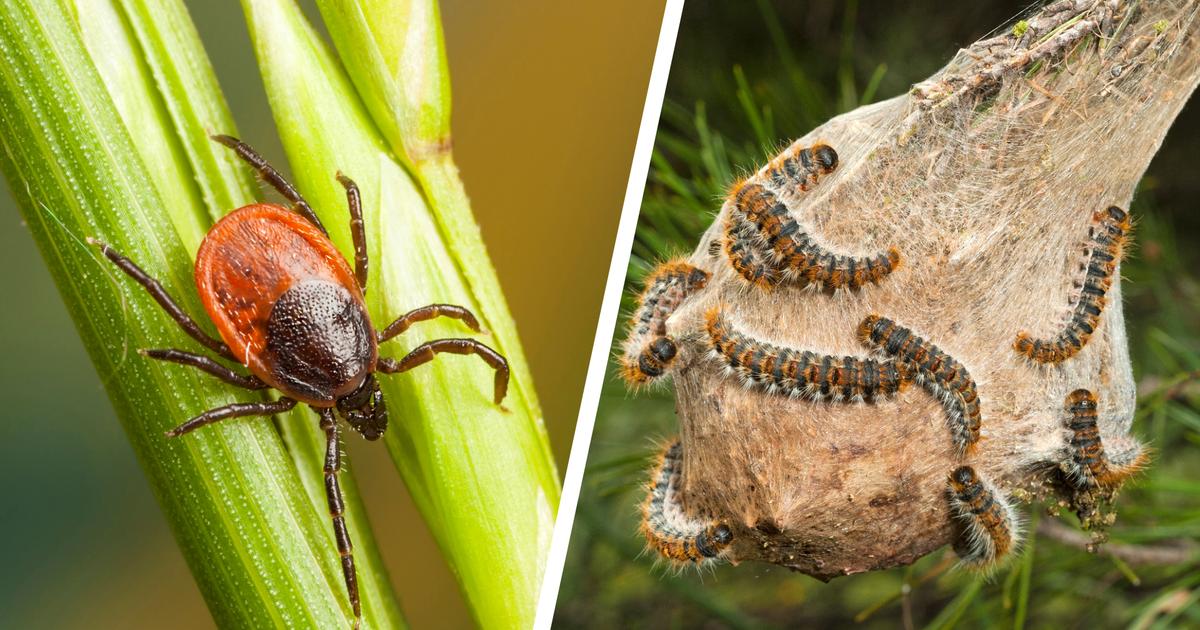By Leticia E. Bartolomé del Pino - The Conversation
Parasitic zoonoses are diseases caused by parasites transmitted from animals to man, and vice versa.
The common routes of infection are
direct contact, ingestion of infective forms, foodborne transmission, or the bite
of an insect vector.
Parasites live at the expense of the organisms they invade and are classified into three large groups: protozoa, helminths (trematodes, cestodes and nematodes) and arthropods.
In addition, depending on their location they can be endoparasites (tapeworms) or ectoparasites (ticks, fleas).
These are some of the
most common parasitic zoonoses
that are subject to surveillance in many countries.
cryptosporidiosis
It is caused by the protozoan
Cryptosporidium parvum
, which affects humans and young calves and lambs.
There is another species,
Cryptosporidium hominis
, which almost exclusively infects humans.
This microorganism is transmitted by the fecal-oral route, by ingestion of infectious oocysts, direct contact with infected people or animals, or by contaminated water and food.
Their cysts can survive for months in moist soil or water and withstand harsh environmental conditions for long periods of time.
She is Momma Mia, the dog that Meghan Markle and Prince Harry rescued
Aug. 26, 202200:19
The
disease can be asymptomatic or cause intestinal discomfort with diarrhea
.
It usually resolves spontaneously, but in immunosuppressed people it can develop severe symptoms and be life-threatening.
giardiasis
Infestation by the protozoan called
Giardia lamblia
,
Giardia intestinalis
or
Giardia duodenalis
affects both humans and animals (dogs, cats, cows and sheep).
In the environment, the main reservoirs of the parasite are surface waters.
Giardia cysts can survive for long periods of time in the environment, and chlorination of water alone cannot inactivate them.
It is transmitted by
personal contact with infected patients or animals
or by exposure to contaminated food or water.
Babies and children are at particularly higher risk of infection.
Infected people may remain asymptomatic or develop acute or chronic diarrhea.
Bloating, fatigue, and malabsorption of vitamins and fats may also occur.
hydatid disease
This zoonotic disease is caused by the larval stage (hydatid cyst) of the tapeworm
Echinococcus granulosus
.
The adult forms live in the intestine of the definitive host, the dog (also foxes), which excretes eggs with the faeces.
Those eggs can be ingested by the intermediate hosts, sheep, goats, pigs and humans.
The eggs hatch and release the larvae in the duodenum, which cross the intestinal barrier and migrate to certain organs (liver, lung, kidney, brain) where they will form cysts.
Dogs become infected by ingestion of raw viscera of cyst-infected intermediate hosts.
More than 10 countries with his dog Becki on his shoulder: this was the epic journey of a Venezuelan immigrant heading to the United States.
Aug. 21, 202202:56
Poor hand hygiene, close contact with infected animals, and consumption of unwashed and poorly cooked food contaminated with echinococcus eggs (eg, vegetables) are risk factors.
Apart from
better cleaning food and cooking meat
, regular deworming of dogs and correct elimination of their feces are a tool for the prevention of hydatid disease.
The symptoms are different depending on the affected organ and are manifested due to the increase in size of the cysts.
Treatment, depending on the case, may require surgery and the use of specific anthelmintic medications.
leishmaniasis
This disease caused by protozoa of the
Leishmania
genus is transmitted by the bite of mosquitoes of the
Phlebotomus
(Europe, Africa and Asia) or
Lutzomyia
(America) genera.
The reservoirs are mainly dogs, but also other mammals.
Leishmaniasis manifests itself in different ways.
The cutaneous form causes skin sores that often heal on their own within a few months.
The mucocutaneous form produces deeper lesions at the mucosal level.
Visceral leishmaniasis causes a systemic disease that presents with
fever, malaise, weight loss, and anemia, swollen spleen, liver, and lymph nodes.
The best way to prevent leishmaniasis is to avoid exposure to the vector, early diagnosis and proper management of cases, both in humans and domestic animals that act as a reservoir, and through vector and zoonotic reservoir control measures.
There are drugs to treat it, but there are no vaccines marketed for humans.
There are only vaccines against canine leishmaniasis, although their efficacy is still controversial.
toxoplasmosis
Cats are the main reservoir of the parasite that causes this disease, the protozoan
Toxoplasma gondii
.
These microorganisms excrete cysts into the environment capable of infecting many animals and humans.
Toxoplasma cysts can survive in the environment for a long time.
What should you do if you lose your dog?
An expert indicates the steps to follow
Aug. 17, 202201:49
Infection occurs by eating undercooked meat infected with cysts (especially pork and lamb), by ingesting cysts present in contaminated food (poorly washed vegetables) or water, by ingestion of infected cat feces, or by direct mother-to-child transmission During pregnancy.
The infection usually does not produce symptoms in humans or they are very mild.
However, the disease can be serious in immunocompromised people or if it occurs during pregnancy.
In congenital infections, the parasite can cause eye or brain malformations (with disabling effects on the individual) or result in miscarriage or perinatal death.
Congenital toxoplasmosis is preventable through gestational screening and the adoption of prophylaxis measures.
trichinellosis or trichinosis
It is a zoonosis caused by nematodes belonging to the
Trichinella
genus , a parasite that is initially located in the intestine and gives rise to a new generation of larvae that migrate to the muscles, where they encyst.
Many animals can act as reservoirs, but the most frequently implicated in cases of human infection are pigs, horses and wild boar.
The infection occurs exclusively through food, through the consumption of raw or undercooked meat that contains the larvae of the parasite.
In humans, the clinical picture varies from asymptomatic cases to particularly severe cases and even deaths.
Classic symptoms are characterized by
diarrhea, muscle pain, weakness, sweating
, edema of the upper eyelids, photophobia, and fever.
There are antiparasitic drugs to treat the infection.
Prevention of trichinosis is based on accurate inspection of all slaughtered pigs and horses, which is mandatory in Europe.
Imported and bushmeat pose a higher risk and should be discouraged from being eaten raw or undercooked.
Diseases transmitted by lice and ticks
The list of notifiable diseases in many countries also includes other zoonotic diseases that are transmitted by ectoparasites such as ticks or lice, but whose causal agent is actually a bacterium (genera
Rickettsia
,
Borrelia
) or virus (Flavivirus).
These are tick-borne encephalitis, tick-borne relapsing fever, and Mediterranean spotted fever.
She is Louboutina, a golden retriever who has gone viral on social networks for giving out hugs
July 21, 202203:52
Transmission generally occurs when the ectoparasite feeds on an infected animal (with these viruses or bacteria) and then feeds on a human, inoculating viruses or bacteria in the process, which are the ones that will cause the disease.
Preventive measures
Prevention depends on the type of parasite and its form of transmission.
In addition to the specific indications for each one, special attention must be paid to cleaning vegetables, eating raw vegetables and cooking meat, which must be eaten well cooked.
Methods such as salting, curing, smoking, and marinating are not effective treatments for destroying parasites or cysts.
Likewise, it is important to follow
basic hygiene rules such as washing your hands before eating and after going to the bathroom.
Proper water management and treatment is also essential.
The use of animal excrements as fertilizer should be avoided, and in general handle the excreta of domestic animals with care and prevent children from coming into contact with them.











/cloudfront-eu-central-1.images.arcpublishing.com/prisa/EXJQILQR5QI7OMVRTERD7AEZAU.jpg)
